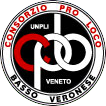San Pietro di Morubio is 32 km away from Verona. It is located on the central belt of the Veronese plains at an average altitude of 19 m above sea level. Its territory includes its fraction Bonavicina. It borders the Comuni of Angiari, Bovolone, Cerea, Isola Rizza and Roverchiara.
ETYMOLOGY
The area around San Pietro di Morubio was formerly a contrada of the town of Roverchiara, from which it detached itself in the Comuni age. In the course of time it bore several different names: “Moruiolo”, “Marubio”, “Morugio”, “Morugiolo”. Later it got named “Fossa Sancti Petri” (Saint Peter’s ditch, in Latin) after a nearby river. Currently there are two theories on the origin of the town’s name: one attributes the word Morubio to the noble house of the Rubiani; the other claims that the name refers to Mulberry trees, “moraro” in the local dialect.
HISTORY
The first evidences left by the inhabitants of San Pietro di Morubio and Buonavicina date back to the 1200s. Between the eighth and the eighteenth century, these lands were dominated by noble and prestigious families such as the Dal Verme, the Loredan, the Brolio, the Emilei and the Franco, who inhabited Malavicina and Borgo, while the Troiani-Alcenago, the Dionisi, the Verità, the Guastaverza and the Rubiani inhabited San Pietro di Morubio. During the 1400s wheat, vegetables and hemp cultivation developed in this area. In the 1600s swamps and marshlands were reclaimed canalising the waters towards bigger courses, also rice and fruit farming were introduced. A gravestone marked 10 September 1796 testifies the presence of Napoleonic troops around that time, it is placed inside Palazzo Alcenago-Troiani, on street “IV November” in San Pietro di Morubio. Sericulture flourished in the early 1800 along with the cultivation of mulberry trees and castor oil plants, useful both as a lubricant and for his medical proprieties. In the nineteenth century, several other cultivations were introduced, such as sugar beets, tobacco and castor-oil plants, thanks to which several oil mills and tobacco factories appeared around the town. In 1874, after several demands by the very inhabitants of the fraction formerly know as Malavicina (bad-neighbour in Italian), its name was finally changed to the more graceful Bonavicina (good-neighbour). In the early 1900s its people worked in the tobacco plantations of the town.
ART
In the 1700s, upon the remains of some small churches, some of which dating back to the 1300s, the parishes of San Pietro Morubio and of Bonavicina were built, with their baroque altars, pictures and statues of several different times (such as the renowned statue credited to the school of Giolfino), while in the parish of Borgo there is an altarpiece believed to be the work of Domenico Riccio, known as Brusasorzi, or of his son Felice.
ECONOMY
The economy is mainly agricultural. The breeding of beef cattle and birds is quite advanced and makes use of modern technologies. The handicraft specialized in artistic furniture flourished in the last decades of the 1900s, especially in Bonavicina. There was also a development of the production of fertilizer and oil from soy and sunflowers, typically farmed in the area.
